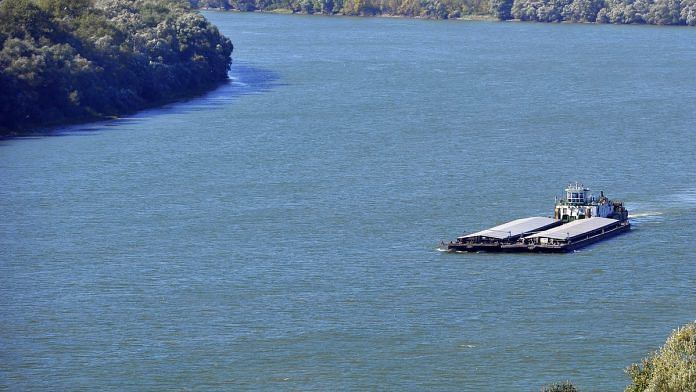New York: Another slow-motion, man-made environmental disaster has been discovered, and it’s underneath your feet.
About 70% of the water pumped out of underground aquifers worldwide is used for agriculture while much of the remainder quenches the thirst of cities. As industrial development spreads at a speedy clip, the rate at which those critical reservoirs are emptied is far outpacing the rate at which they are naturally replenished.
But as with the climate crisis, there are plenty of disastrous side-effects on the road to a water catastrophe. A new study released Wednesday says that diminishing groundwater is causing the level of streams and rivers to fall as well. Like the shrinking aquifers, surface water is critical to farms, towns and cities for everything from food to trade to energy production.
With water systems all over the planet already strained by global warming and overuse, this new discovery poses an additional threat.
Watersheds are regions where a set of streams and rivers fed by rain and snow-melt all flow into a common, larger body of water. They include the groundwater underneath. By 2050, more than half of watersheds where groundwater is pumped out may see river flow drop, according to the study, published in the journal Nature.
In watersheds such as California’s Central Valley, the Midwestern U.S.’s high plains, the Upper Ganges and the Indus in South Asia, groundwater is already being depleted. And while 2019 saw record flooding across the central U.S., the study uses data that go back as far as 1960, and projects groundwater-pumping impacts to 2100.
“These systems are all connected,” says Betsy Otto, director of the World Resource Institute’s global water program. “So when you pump groundwater, you actually may be pumping water from tributary streams that would otherwise go into surface water, bodies, rivers and so on. Or you may actually be pulling water out of the river.”
WRI manages a “water risk atlas,” called Aqueduct that in August upgraded its geographic analysis of water stress globally by combining data on groundwater and surface-water risks.
“Our overuse of groundwater resources is one of those quiet, under-appreciated challenges,” says Jason Morrison, president of the Pacific Institute, who wasn’t involved in the study. “The impacts are more profound than we understood. We’re kind of in this Wile E. Coyote moment where we’re over the cliff and we’re running still.”
The authors of the study, from universities in the Netherlands, Germany, Canada and the U.S., say their results “reveal the current and future environmental legacy of groundwater use.” The research is novel for its focus on the effects of pumping water out of the ground on the rest of the watershed. They define the threshold as diminished stream-flow for at least three separate months, two years in a row—or the point at which the flow can’t keep animals and plants in an ecosystem alive.
That threshold has already been eclipsed in as much as 21 percent of watersheds where pumping is common (about half of watersheds overall). Areas already in trouble, like those in the U.S. and India, belong to hotter climates that rely on groundwater for irrigation because rivers don’t supply sufficient volume. In America, the affected watersheds are also home to much of the nation’s agriculture production, a prime culprit in the drop in groundwater.
The study is the newest addition to a body of research suggesting vital connections between far-flung parts of freshwater systems. Aquifers replenish over long periods of time. Scientists now have a better understanding of what aquifers give back by feeding rivers, lakes, springs and wetlands.
The authors recommend that nations “urgently” figure out the thresholds where groundwater pumping begins to affect the surface environment, so that it can be prevented from getting worse.
“Even where groundwater depletion poses an existential or economic threat, governments aren’t managing to do much.”
Inge de Graaf, assistant professor at the University of Freiburg and the study’s lead author, says she hopes water managers will “start developing more sustainable water management or different irrigation techniques using less groundwater.”
Experts echoed the findings that human impacts in one part of a watershed can affect the rest of it.
Finding that a relatively small amount of water withdrawal from an aquifer—as little as a half-meter—can lead to stream loss is an important finding, especially as people recognize that the problem is global, says Yoshihide Wada, acting director of the water program at the International Institute for Applied Systems Analysis. “This was very surprising, because a half-meter, one-meter decline in the groundwater head is already happening in many regions,” he says.
Also read: How the business of water scarcity can be tackled in India
But Upmanu Lall, director of the Columbia Water Center in New York, says that while raising the issue’s profile is important, current water policies don’t provide much hope that this new threat will be quickly addressed.
“Even where groundwater depletion poses an existential or economic threat,” he says, “governments aren’t managing to do much.”
The study doesn’t address another negative, ground-level byproduct of depleted aquifers. Groundwater pumping can trigger land subsidence, wreaking havoc on roads and power lines. In extreme cases, crumbling land above a depleted aquifer can open cracks that allow polluted surface water to mix with groundwater, putting drinking water at risk.
The worst news, however, is that groundwater depletion rates and surface impact estimates “are likely to be optimistic,” the authors say, “as they do not take into account projected increases in groundwater demand due to population growth or economic development in the emerging economies of the world.”
In other words, as was revealed by the United Nations last month with regard to global warming, the dangers associated with groundwater depletion may be much worse than we think.
Also read: India could soon have ‘water refugees’ migrating to other countries



